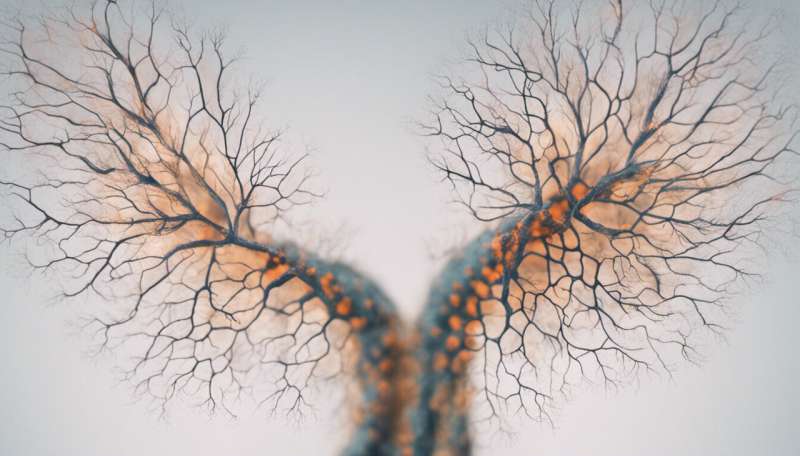Large-scale Japanese genomics project finds eight new loci linked to atopic dermatitis

Around one in ten Japanese school children suffer from a debilitating form of eczema known as atopic dermatitis (AD). Despite clear signs that the condition is heritable, the genetic origins of the disease have remained elusive. Now, in a study of about 3,300 Japanese individuals with AD and some 15,000 unaffected controls, researchers have discovered eight new loci with ties to the chronic inflammatory skin disorder, a finding that could lead to new treatment options, particularly for Japanese people.
"Further investigation of the susceptible loci of atopic dermatitis could lead to the development of new therapeutic treatments," says Mayumi Tamari of the RIKEN Center for Genomic Medicine in Yokohama, who led the study.
People with AD typically suffer from persistent, itchy and flaky rashes covering many parts of the body. When two parents have AD, their offspring have a 70% risk of also developing the disease, with a mode of inheritance that appears to be complex, involving several genes.
To find those genes, Tamari and her colleagues decoded more than 600,000 single DNA letters spread across the entire human genome of their Japanese cohort. Other research teams working with individuals from China and Europe had previously reported seven susceptibility loci for AD. These cropped up in the Japanese group's analysis, too. However, Tamari's team also discovered eight newly identified risk loci in the Japanese population. These included genes implicated in innate-acquired immunity, inflammation and skin-related protection, as well as parts of the genome associated with asthma and other allergies.
For example, one of these associated loci contained IL1RL1, an interleukin cytokine receptor gene. IL1RL1 is expressed by T-helper cells and mast cells in the skin, and this region has also been identified recently as a susceptibility locus for bronchial asthma. This finding makes sense, notes Tamari, as more than 50% of children with severe atopic dermatitis also suffer from asthma and approximately 75% also have allergic rhinitis.
Topical steroids and the immunosuppressive agent tacrolimus are currently the mainstays of AD treatment. However, these therapeutic agents don't work for everybody, and researchers have been on the hunt for new treatment options.
Interestingly, the researchers found a susceptibility locus on chromosome 20 that includes CYP24A1, a gene which is involved in vitamin D metabolism. Considering that vitamin D ointment is commonly used to relieve some of the dry skin symptoms associated with psoriasis, Tamari says that clinical studies should be conducted to see whether vitamin D ointment is effective for atopic dermatitis.
More information: Hirota, T., et al. Genome-wide association study identifies eight new susceptibility loci for atopic dermatitis in the Japanese population. Nature Genetics 44, 1222–1226 (2012). www.nature.com/ng/journal/v44/ … 11/full/ng.2438.html




















